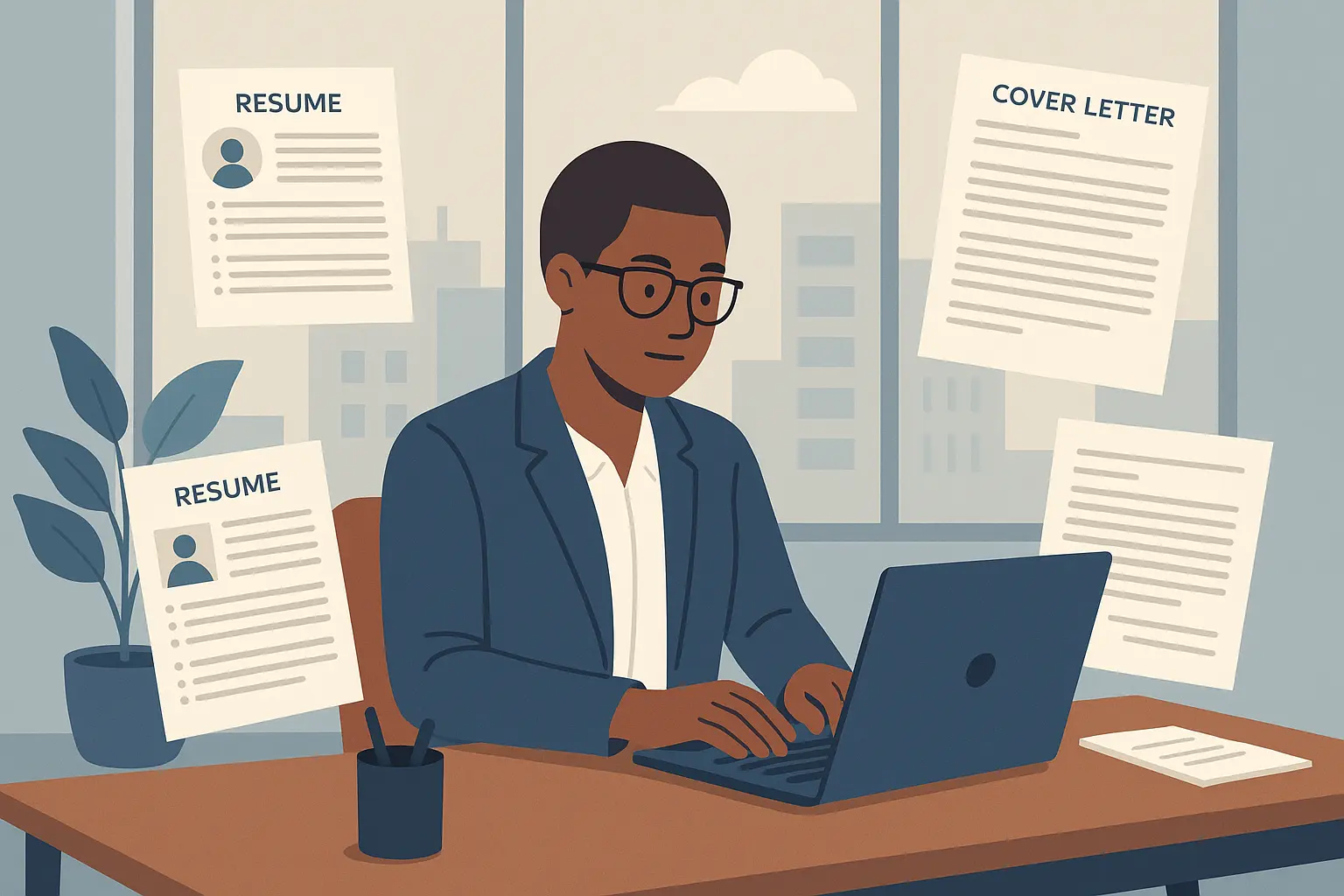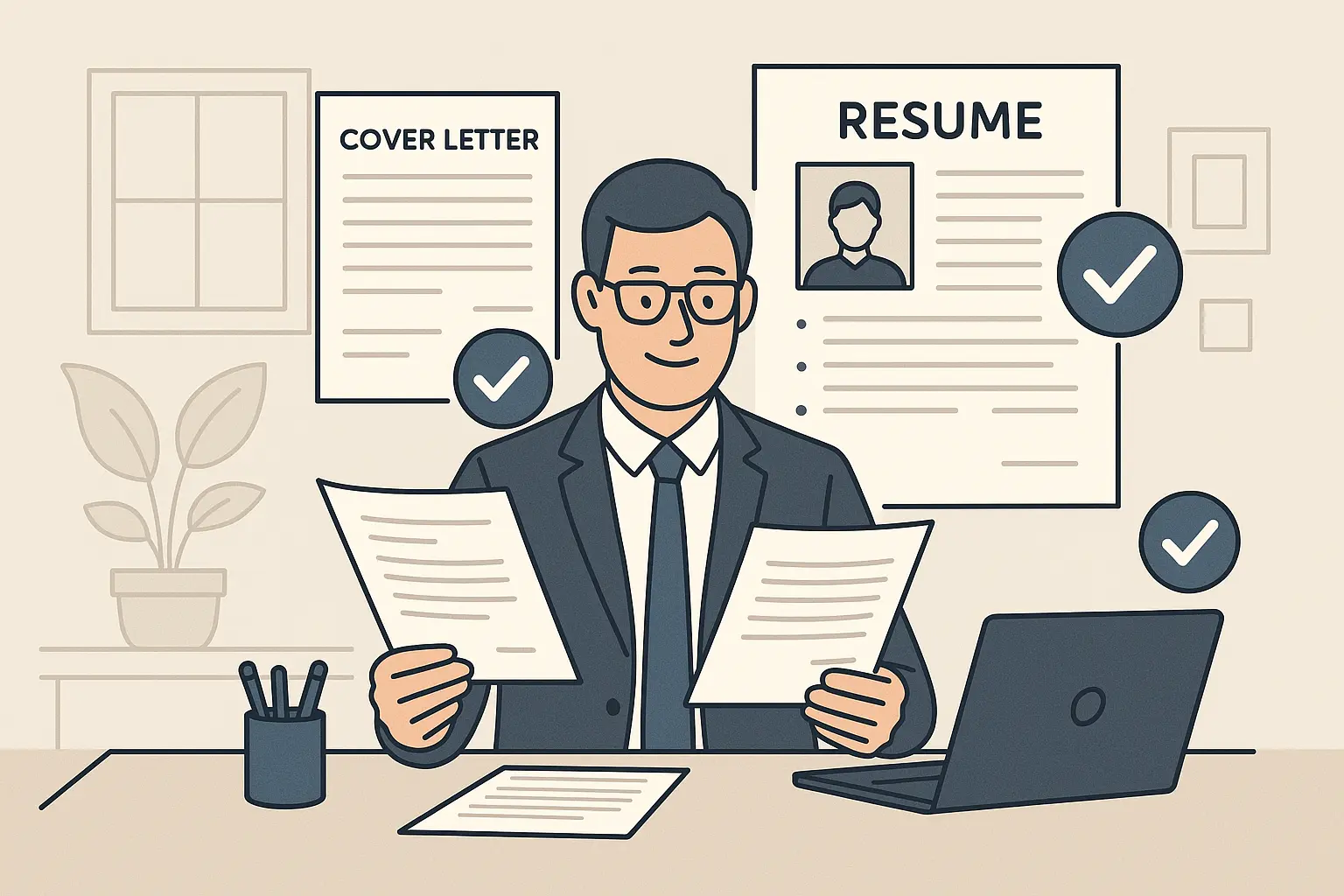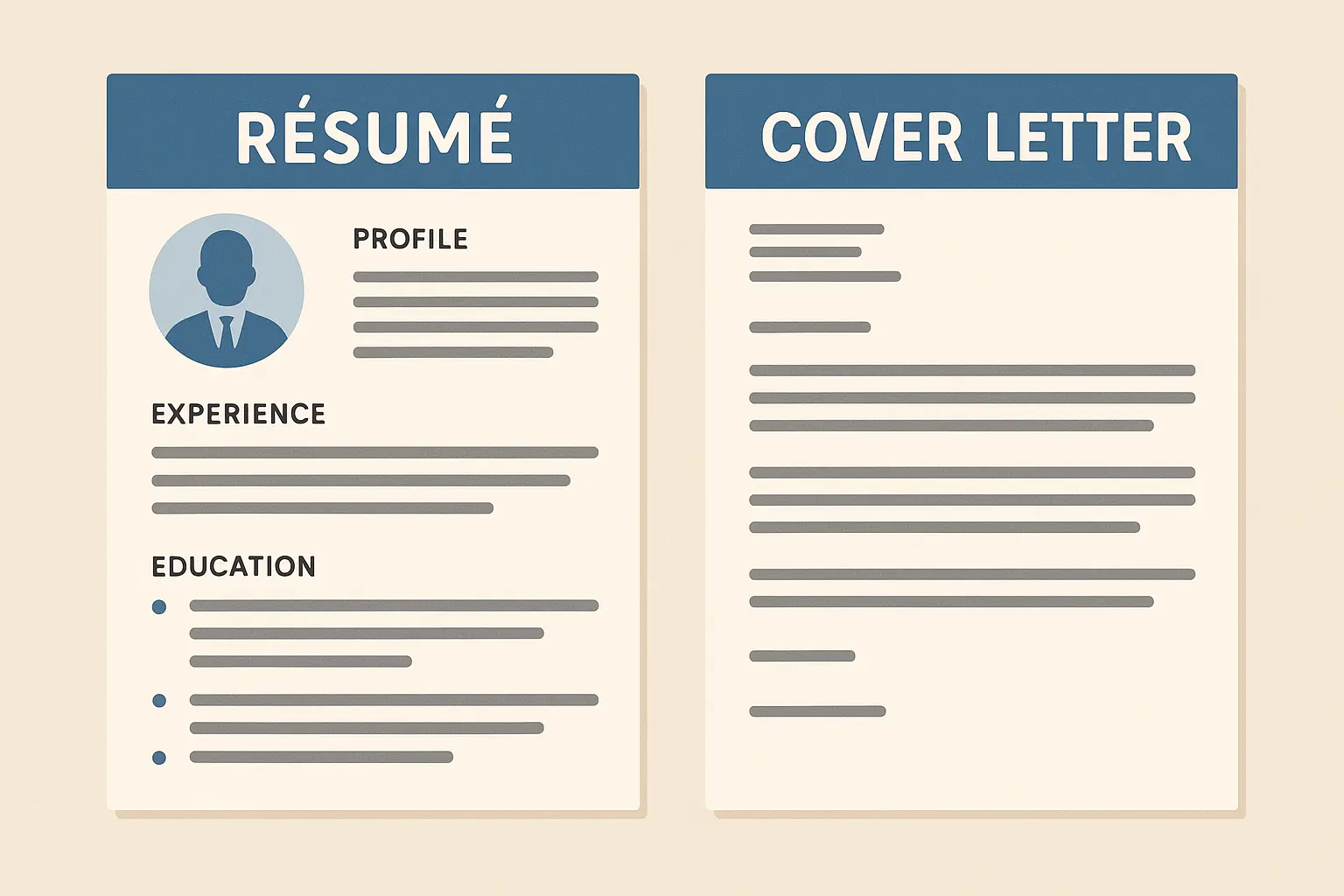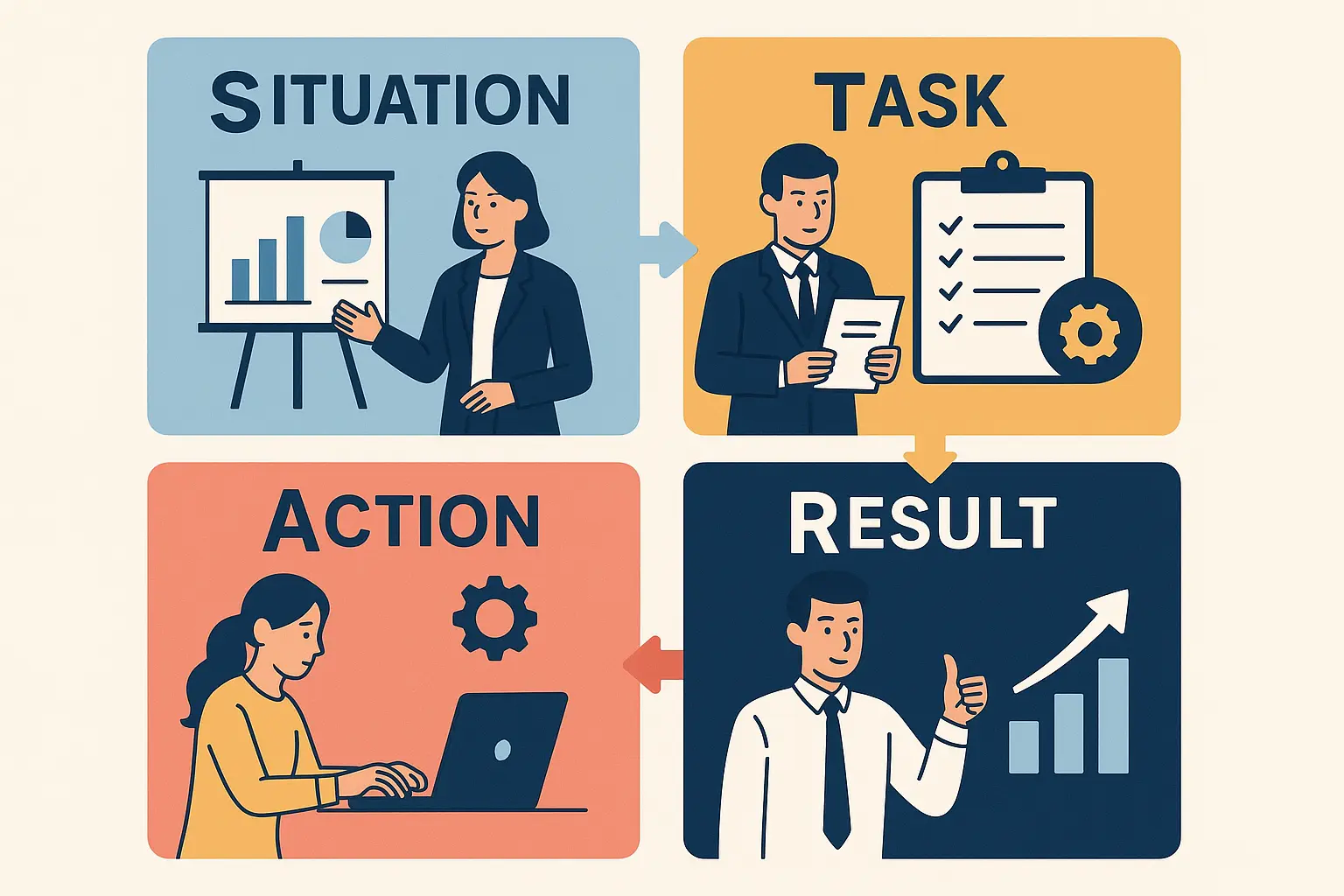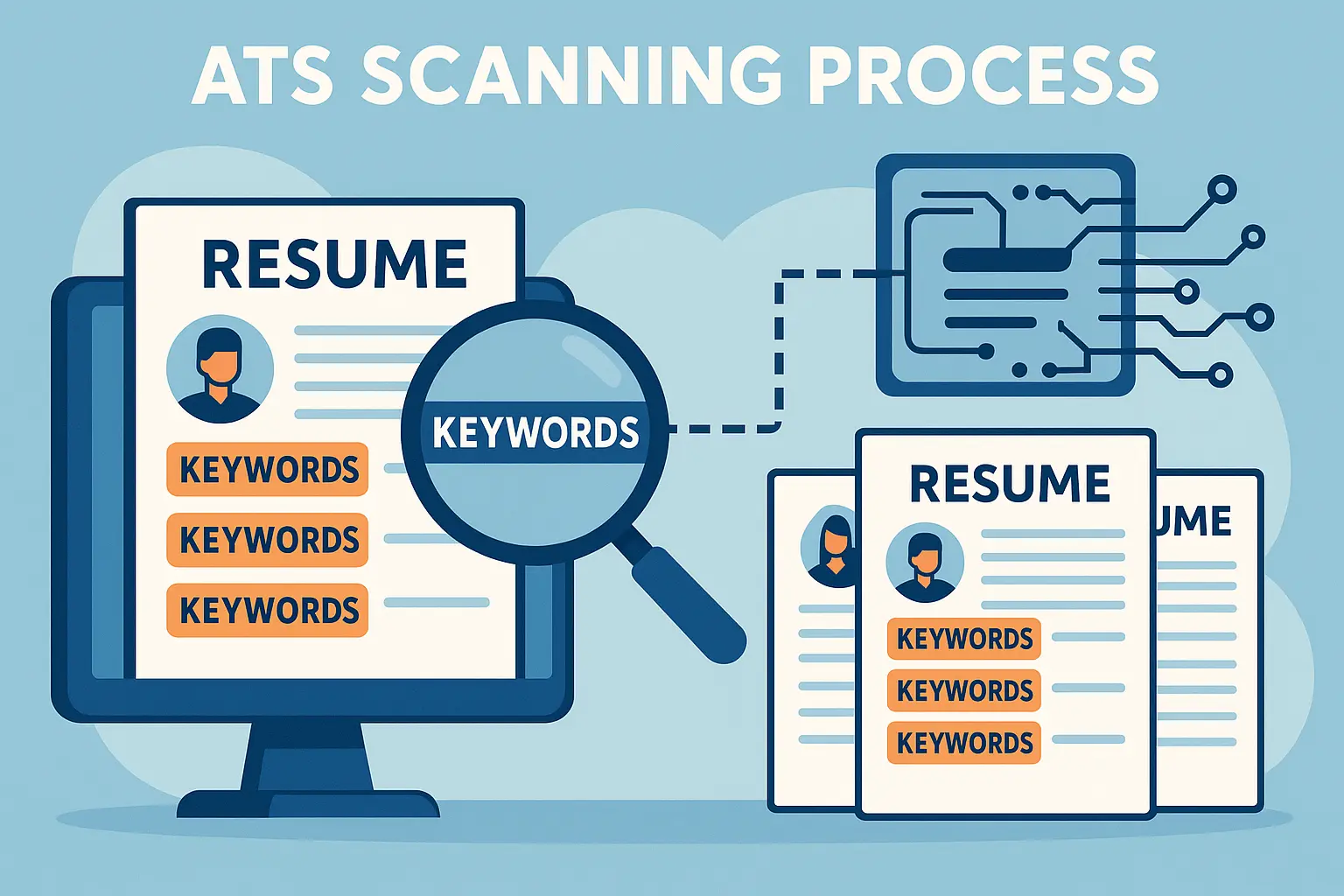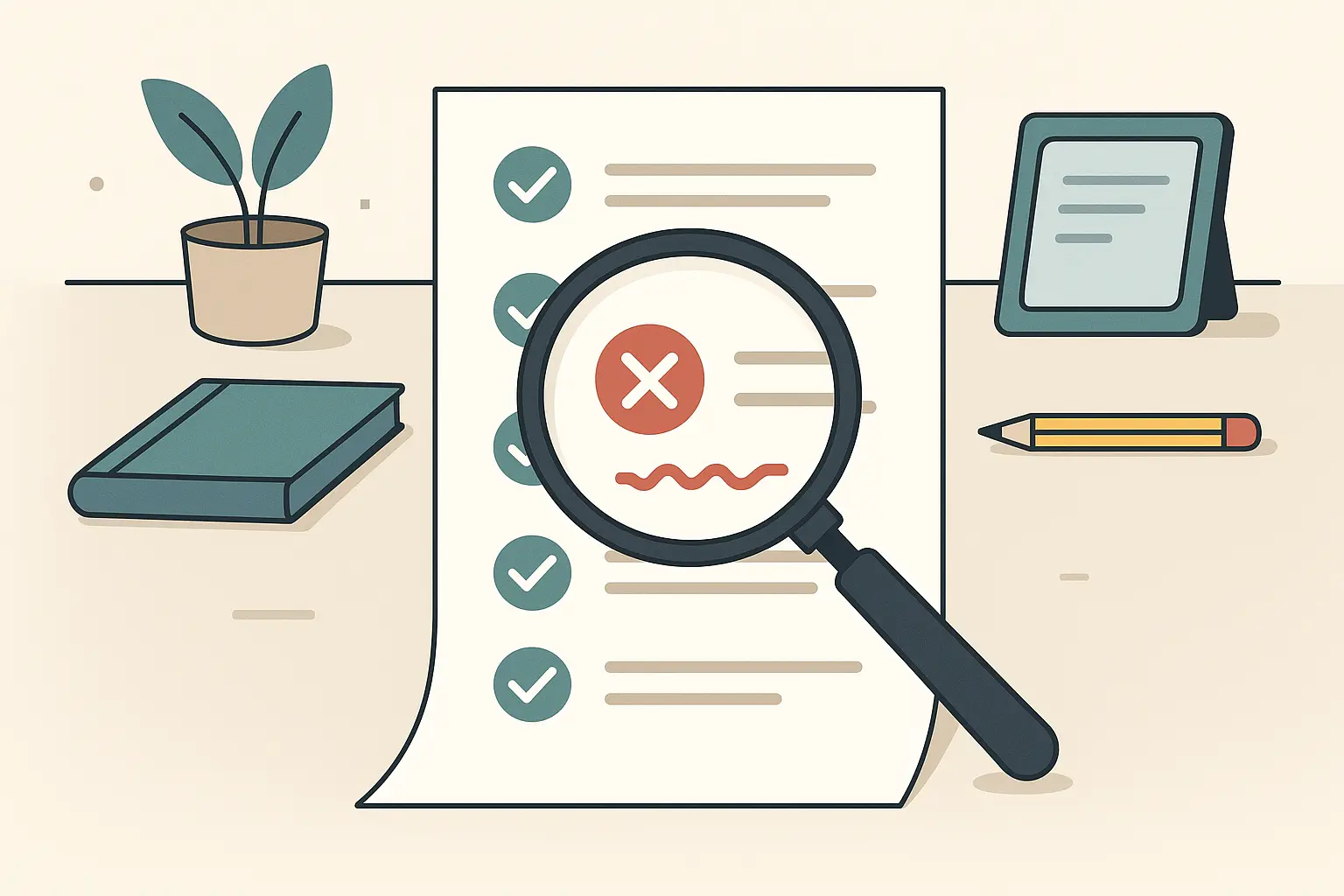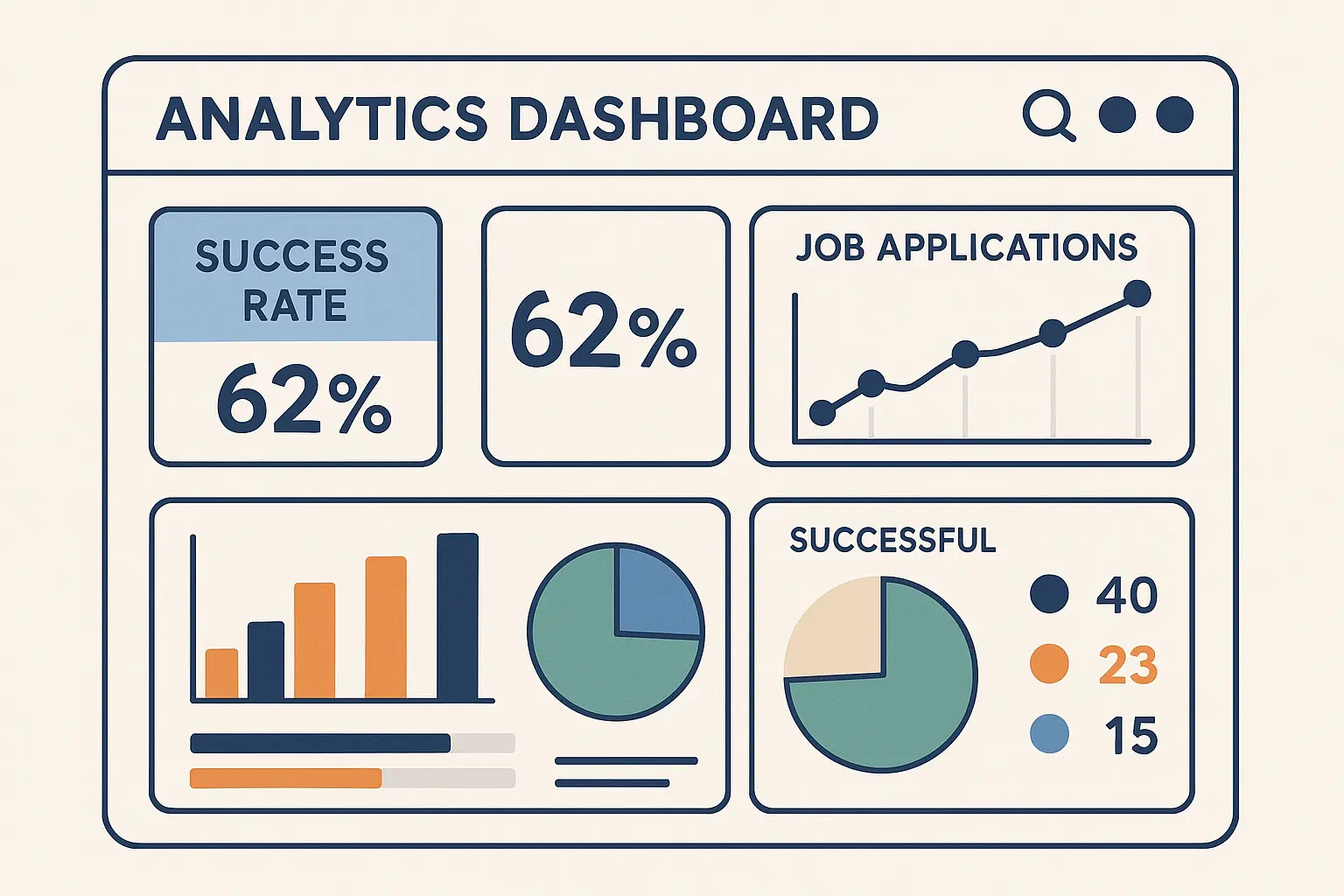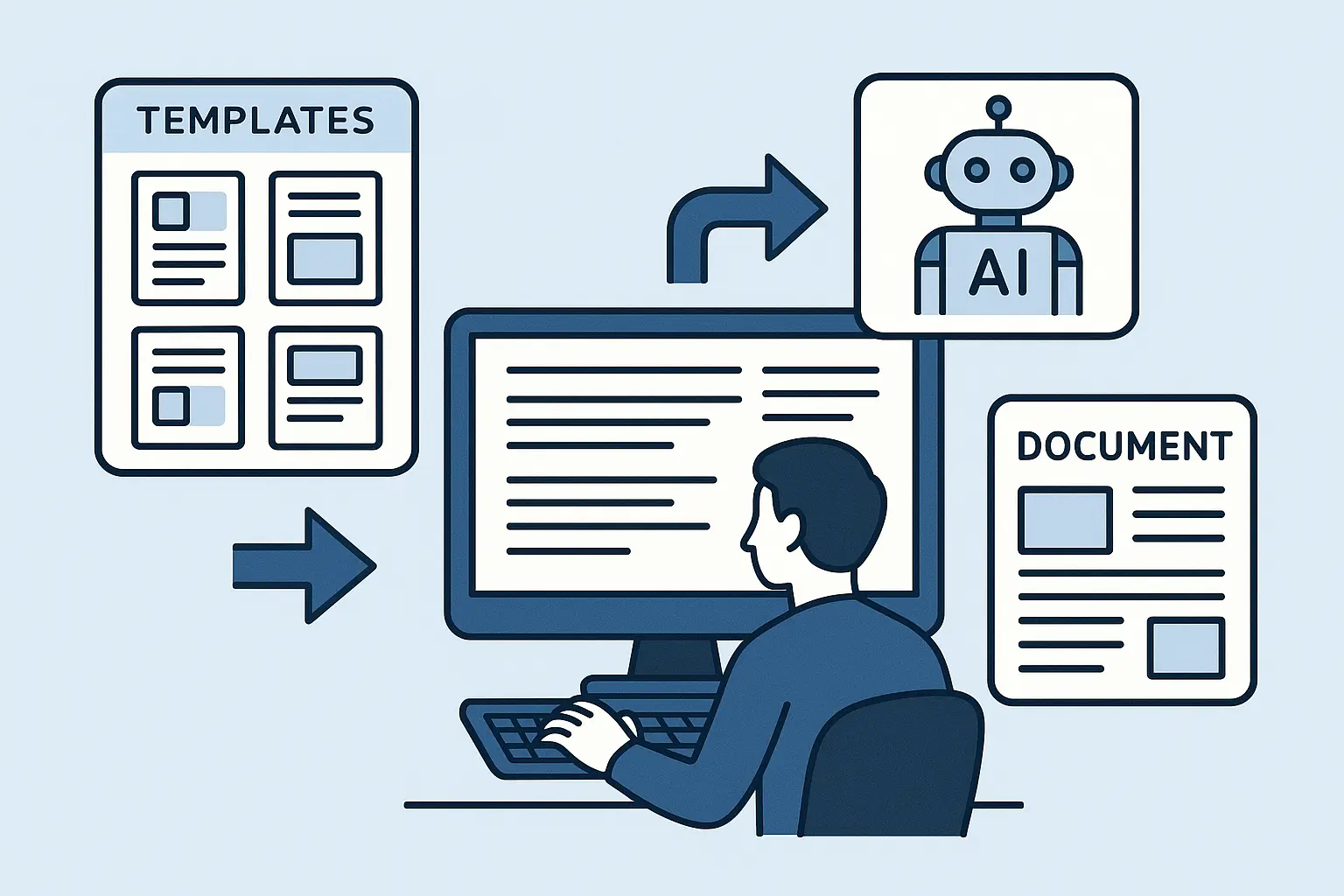How to Write a Cover Letter That Actually Gets You Noticed (Without the Generic Fluff)

Let me guess – you’re staring at a blank document, cursor blinking, wondering how to write a cover letter that doesn’t sound like every other cover letter ever written. Been there.
Most people approach cover letters completely wrong. They either skip them entirely or write boring, templated nonsense that hiring managers ignore. But here’s the thing – with 94% of hiring managers finding cover letters influential when deciding who to interview, according to Resume Genius, this isn’t a skill you can afford to ignore. That’s why learning how to write a cover letter effectively is one of the most valuable career skills you can develop.
This guide breaks down everything you need to know about how to write a cover letter that actually works — from understanding why they still matter to getting past those pesky applicant tracking systems.
Table of Contents
- Understanding Cover Letter Fundamentals
- Why Cover Letters Still Matter in Modern Hiring
- Essential Components That Make or Break Your Application
- Finding the Sweet Spot Between Templates and Customization
- Crafting Content That Tells Your Professional Story
- Opening Lines That Hook Hiring Managers
- Building Your Case in the Body Paragraphs
- Closing Strong with Clear Next Steps
- Advanced Strategies for Standing Out
- Research-Driven Personalization Techniques
- Making Your Cover Letter ATS-Friendly
- Polishing and Perfecting Your Final Draft
- Bulletproof Proofreading Methods
- Tracking What Works and What Doesn’t
TL;DR
- Cover letters bridge gaps your resume can’t fill and prove genuine interest in specific roles
- Modern formatting must work for both ATS systems and human readers – clean, simple, keyword-optimized
- Smart templates save time while allowing meaningful customization for each application
- Strong openings use specific achievements or connections rather than generic introductions
- Body paragraphs should directly connect your experience to the company’s stated needs
- Research the company’s culture, recent news, and pain points to personalize effectively
- ATS optimization requires natural keyword integration without sacrificing readability
- Multi-stage proofreading catches errors that could instantly disqualify your application
- Track response rates to identify which approaches work best for your industry and role type
Understanding Cover Letter Fundamentals
Here’s the thing about cover letters – they’re not just resume summaries with fancy letterhead. They’re your chance to have an actual conversation with the hiring manager before you meet them.
Think of your resume as your dating profile – it lists the facts. Your cover letter? That’s your opening message that makes someone want to swipe right and actually meet you.
Just as choosing the right professional resume format sets the foundation for your application materials, understanding cover letter fundamentals ensures your entire application package tells a cohesive professional story.
Why Cover Letters Still Matter in Modern Hiring
Despite what your friend who “never writes cover letters” tells you, 83% of hiring managers actually read them. And get this – nearly half read your cover letter before they even look at your resume, according to Resume Genius. So yeah, they matter.
They fill in the blanks your resume can’t. Got a career gap? Switching industries? Your resume just shows the facts, but your cover letter tells the story. Don’t make hiring managers play detective – give them the context they need.
They prove you actually want THIS job. Anyone can blast out the same resume to 50 companies. But a cover letter that mentions their recent product launch or references their company values? That shows you’re not just throwing spaghetti at the wall.
They’re your writing sample. If you can’t write a compelling paragraph about yourself, how are you going to handle that client proposal or team update email?
The job market continues to evolve rapidly in 2024, with many employers now making cover letters optional. However, as “University of Cincinnati” research shows, a cover letter can make your application 38% more likely to get noticed, and as many as 45% of employers may skip over applications lacking one entirely.
Essential Components That Make or Break Your Application
Forget everything you learned about cover letters in college. Those stuffy, formal templates don’t work anymore. Here’s what does:
Keep it simple and ATS-friendly. Those fancy graphics and creative fonts? They’ll break when the applicant tracking system tries to read them. Stick with clean formatting that works whether a robot or human is reading it.
Understanding ATS resume format principles is crucial since your cover letter must work alongside your resume to pass through applicant tracking systems successfully.
The sweet spot these days is 200-400 words – about half a page. Think Twitter thread, not novel. As noted in “HerMoney’s 2024 analysis”, the ideal cover letter length has shifted dramatically from the ultra-long formats of the early 2000s.
| Cover Letter Format Element | 2020 Standard | 2024 Best Practice |
|---|---|---|
| Length | 1 full page | 200-400 words (half page) |
| Paragraphs | 4-5 lengthy paragraphs | 3-6 concise paragraphs |
| Focus | Detailed work history recap | Motivations & key achievements |
| Tone | Formal and lengthy | Personality-driven & concise |
| File Format | Word document preferred | PDF for ATS compatibility |
Make it match your resume. Use the same header, fonts, and overall look. Your application materials should look like they belong together, not like they came from different people.
Finding the Sweet Spot Between Templates and Customization
You don’t need to reinvent the wheel every time, but you can’t just fill in the blanks either. Here’s the smart approach:
Build a flexible framework with your core stories and value propositions, then customize the middle paragraphs for each job. Keep a document with 5-6 different achievement stories you can mix and match depending on what the job needs.
Your basic structure:
- Hook them with something specific about the company or role
- Share 1-2 relevant achievements with actual numbers
- Connect your experience to their needs
- Close with confidence and next steps
Different industries have different expectations. Creative fields might appreciate more personality, while finance prefers straightforward results. Read the room.
Crafting Content That Tells Your Professional Story
This is where most people blow it. They either go full robot mode (“I am writing to express my interest…”) or try too hard to be clever. The best cover letters feel like a conversation between professionals.
Opening Lines That Hook Hiring Managers
Your first sentence determines everything. Skip the generic “I’m writing to apply for…” garbage and start with something that immediately shows you’re worth their time.
With 41% of hiring managers considering the introduction the most important part of a cover letter, according to Resume.io, your opening lines can make or break your application before they even read your qualifications.
When you’re learning how to write a cover letter that gets noticed, remember that first impressions happen within seconds. Make those seconds count.
Lead with results:
Instead of: “I am excited to apply for the Marketing Manager position.”
Try: “After increasing lead generation by 150% in my first year at StartupXYZ, I’m excited to bring that same growth focus to your Marketing Manager role.”
Use connections:
“Sarah Johnson suggested I reach out about the Marketing Manager opening” instantly creates credibility. Just make sure Sarah actually said it was okay to use her name.
Reference something specific:
“I noticed TechCorp just launched its new sustainability initiative – having implemented similar programs that reduced costs by 30% at my current company, I’d love to discuss how I could contribute to your environmental goals.”
Compare these two openings and tell me which one you’d keep reading:
- Generic: “I am writing to express my interest in the Marketing Manager position at your company.”
- Compelling: “After increasing territory sales by 40% in my first year at TechCorp, I’m excited to bring my growth marketing expertise to the Marketing Manager role at InnovateCorps.”
The difference is night and day. One makes you yawn, the other makes you want to know more.
Building Your Case in the Body Paragraphs
Don’t just list your qualifications – show how they solve their problems. Go through the job description and identify their top 3-4 needs, then address each one with a specific example.
Turn responsibilities into stories. Instead of “I managed a team,” try “I inherited a demoralized team of 8 and turned things around – within 18 months, we improved productivity by 25% and reduced turnover to zero.”
Match their language. If they mention “cross-functional collaboration,” don’t just drop that phrase randomly. Use it naturally: “I led cross-functional collaboration between marketing and engineering teams to launch three products ahead of schedule.”
| Job Requirement | Generic Response | Specific Achievement Response |
|---|---|---|
| “Project management skills” | “I have strong project management experience” | “I managed a $2M software implementation across 5 departments, delivering 2 weeks ahead of schedule and 15% under budget” |
| “Team leadership” | “I’m an experienced team leader” | “I built and led a cross-functional team of 12 that reduced customer response time from 48 hours to 4 hours” |
| “Data analysis” | “I’m skilled in data analysis” | “I analyzed customer behavior data to identify trends that increased retention by 23% and reduced churn by $500K annually” |
Be their solution. Read between the lines to understand their pain points. If they’re looking for someone to “streamline operations,” share how you’ve successfully improved efficiency before.
Closing Strong with Clear Next Steps
End with confidence, not desperation. Make it easy for them to take the next step without being pushy.
Understanding how to write a cover letter for a job means knowing how to end with impact, not just trailing off with generic pleasantries.
Strong examples:
- “I’d love to discuss how my process improvement experience can help you hit those 2024 efficiency targets. I’ll follow up next week if I haven’t heard back.”
- “I’m excited about bringing my customer success expertise to your team. Happy to share more examples of my work whenever convenient.”
- “Thank you for considering my application. I look forward to hearing from you and would be happy to provide additional examples of my work in customer success.”
Advanced Strategies for Standing Out
Once you’ve got the basics down, these techniques will make your cover letter memorable for the right reasons.
Research-Driven Personalization Techniques
Surface-level personalization is worse than no personalization. Saying “I love your company culture” means nothing. But mentioning their recent acquisition and connecting it to your M&A experience? That gets attention.
When you’re figuring out how to write a standout cover letter, remember that generic personalization is almost worse than no personalization at all. Hiring managers can spot template language from a mile away.
Dig deeper:
- Check their recent press releases
- Look at their social media for company wins or initiatives
- See what their executives are posting about on LinkedIn
- Research their competitors and industry challenges
Then weave these insights naturally into your story. Don’t just mention them – connect them to how you can help.
I once landed an interview because I mentioned a company’s recent sustainability initiative and connected it to my experience implementing green practices at my previous job. That level of research showed I was genuinely interested in what they were doing.
Making Your Cover Letter ATS-Friendly
Most cover letters get screened by ATS before humans see them. The trick is optimizing for robots without sounding robotic.
Much like understanding resume format secrets for ATS optimization, your cover letter needs strategic formatting to pass through digital screening systems while remaining compelling for human readers.
Use their keywords naturally. If the job posting mentions “project management,” don’t just stuff that phrase in randomly. Describe a specific project you managed and the results you achieved.
The trick is making keyword integration feel organic. If the job posting mentions “cross-functional collaboration,” don’t just drop that phrase randomly. Instead, describe how you “led cross-functional collaboration between marketing and engineering teams to launch three products ahead of schedule.”
Keep formatting simple. Standard fonts, clear headings, and basic bullet points (when needed) work best. Save the PDF version to preserve formatting.
(Trust me, I learned this the hard way when my beautifully designed cover letter looked like hieroglyphics in their system)
Polishing and Perfecting Your Final Draft
Even the most brilliant cover letter won’t save you if it has typos or calls the company by the wrong name. Here’s how to avoid those face-palm moments:
Bulletproof Proofreading Methods
Don’t just rely on spell-check. Read it three different ways:
Understanding the steps of how to write a cover letter includes mastering the review process — it’s often the difference between landing an interview and getting passed over.
- Content review – Does it flow logically and tell a compelling story?
- Grammar check – Are there typos, wrong words, or awkward phrases?
- Read aloud – Does it sound natural when spoken?
Each stage catches different issues. Reading aloud reveals sentences that look fine on paper but sound clunky when spoken.
Double-check the basics:
- Company name spelled correctly everywhere
- Hiring manager’s name (if you’re using it)
- Job title matches the posting exactly
- Your contact info is current
- File name is professional (FirstName_LastName_CoverLetter)
Cover Letter Proofreading Checklist:
- ☐ Company name spelled correctly throughout
- ☐ Hiring manager name accurate (if used)
- ☐ Job title matches posting exactly
- ☐ Contact information current and professional
- ☐ No typos or grammatical errors
- ☐ Consistent formatting and font
- ☐ File named professionally (FirstName_LastName_CoverLetter)
- ☐ Saved as PDF for ATS compatibility
Tracking What Works and What Doesn’t
Keep track of which approaches get responses. Note patterns across different industries and role types. When you do get interviews, ask what caught their attention.
I started tracking my applications after realizing I had no idea which approaches were actually working. The data revealed some surprising insights about what resonated with different types of employers.
The job market keeps evolving, and what worked last year might not work now. Stay flexible and keep refining your approach based on real results.
Seek feedback from networking contacts, career counselors, or industry professionals. When you do get interviews, ask what caught their attention in your application materials. Use this insight to refine your approach for future applications.
Just as professionals benefit from exploring best resume builders to enhance their application materials, utilizing feedback and professional tools can significantly improve your cover letter writing process.
Streamline Your Cover Letter Process
Creating personalized, compelling cover letters for every application can be time-consuming and overwhelming. Resume Builder IQ’s integrated cover letter builder combines the strategic approaches outlined in this guide with AI-powered efficiency to help you create standout cover letters quickly and consistently.
Resume Builder IQ offers professional templates that match your resume design, ensuring brand consistency across your application materials. The platform’s AI-driven content suggestions and industry-specific guidance help you implement the research-driven personalization and storytelling techniques that hiring managers value, while built-in ATS optimization ensures your cover letters pass through applicant tracking systems.
With expert tips and suggested phrases integrated throughout the process, you can apply these advanced techniques effortlessly, creating compelling cover letters that complement your professional resume and maximize your interview opportunities.
Whether you’re crafting applications for specialized roles or exploring opportunities across different sectors like those covered in our banking interview questions guide, having a streamlined cover letter process ensures you’re always prepared to present your best professional self.
Final Thoughts
If you’re wondering how to write a cover letter that gets results, remember it isn’t about following rigid formulas or copying templates word-for-word. It’s about having genuine conversations with potential employers and showing them why you’re excited about their specific opportunity.
The hiring landscape keeps changing, but the fundamentals of good communication stay the same. Be clear, be specific, and be genuinely interested in the opportunities you pursue. Your cover letter should feel like a natural extension of who you are professionally, not some generic marketing document.
Remember that every application is practice. Track what works, learn from what doesn’t, and keep refining your approach. With consistent effort and smart strategy, your cover letters will become powerful tools for landing the interviews that lead to your next career opportunity.
Mastering how to write a cover letter takes practice, but the investment pays off when you start seeing more interview requests and better responses to your applications.

